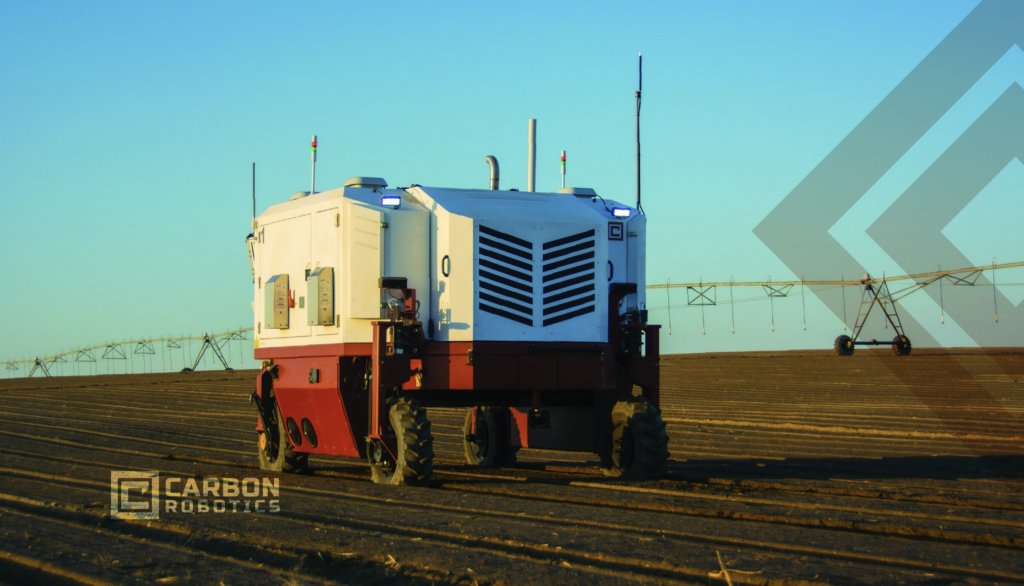With the annihilation power straight out of Star Wars, Seattle-based Carbon Robotics is on a roll with the latest revamp of their weed-killing robot.
Equipped with cameras and industrial 150-watt carbon dioxide lasers usually tasked with slicing metal, the machine identifies different weeds and targets the optimal location for destruction.
How it works: Using computer vision – the same technology that recognizes your Aunt Karen in family Facebook photos – the machine learns the features of various crops and weeds. Labeled images are run through the machine’s neural net to teach it what to kill, where to target, and how much energy is needed.
The robot relies on GPS to navigate the field, running 5 miles per hour to tackle 15-20 acres per day. It’s geared toward early-stage weed growth in vegetable and fruit crops.
Looking to buy? Carbon Robotics sells the robots or offers lease-to-own plans. But if you want to get your hands on one, you’ll have to hang tight – they’re sold out for 2021 as farmers in top specialty crop-growing states clamor for the tech.
The robots address a critical challenge for growers of labor-intense crops: finding folks to do the weeding. Farm labor comes with a hefty price tag, too – building a strong ROI story for the autonomous machines. This method of weed control also leaves the soil untouched, benefitting soil health.
What’s next: Farm robotics are the future. With universities and companies alike investing in ag autonomy, hands-on tasks like harvesting and weeding may be a thing of the past before we know it.
Laser Robot FOMO

